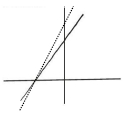Non-competitive inhibition is a specific type of reversible enzyme inhibition characterized by the action of non-competitive enzyme inhibitors. Unlike competitive inhibitors, non-competitive inhibitors do not compete with the substrate for binding sites. Instead, they bind to allosteric sites on either the free enzyme or the enzyme-substrate complex, which is a defining feature of mixed inhibitors.
When a non-competitive inhibitor binds to the enzyme, it decreases the initial reaction velocity (v0) of the enzyme-catalyzed reaction. This inhibition occurs because the binding of the inhibitor prevents the conversion of the substrate into the product, regardless of whether the substrate is bound to the enzyme or not. This means that the presence of the inhibitor effectively hinders the enzyme's catalytic activity.
A key aspect of non-competitive inhibition is that the inhibitor binds with the same affinity to both the free enzyme and the enzyme-substrate complex. This is represented by the inhibition constants: the inhibition constant for the free enzyme (Ki) is equal to the inhibition constant for the enzyme-substrate complex (K'i). This characteristic differentiates non-competitive inhibitors from other mixed inhibitors, which may exhibit different affinities for the two states of the enzyme.
In summary, non-competitive inhibitors play a crucial role in regulating enzyme activity by binding to allosteric sites and reducing the overall reaction rate without competing with the substrate. Understanding this mechanism is essential for grasping the broader concepts of enzyme kinetics and inhibition.



